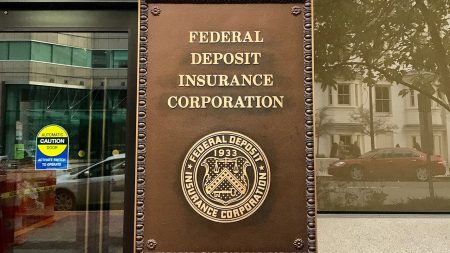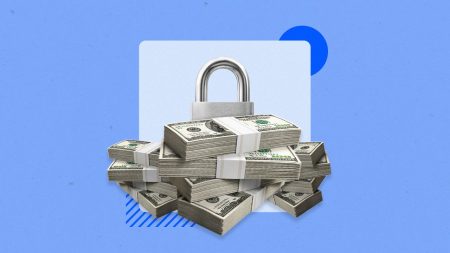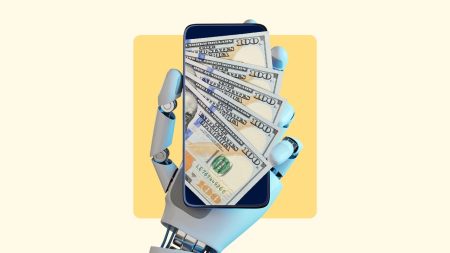Saving money and having an emergency fund can help you handle unplanned expenses and provide peace of mind — especially in uncertain times. It’s also important to have money set aside for other short-term goals.
But stashing away too much cash might not be the best personal finance strategy, either. It’s possible to have too much money sitting in a savings account, especially in one that earns little or no interest.
The drawback of too much in savings
A Federal Deposit Insurance Corp. (FDIC)-insured liquid savings account is a safe place to keep some money that’s easily accessible. A liquid account simply means it’s money you can access easily, as opposed to an illiquid account, such as money tied up in a certificate of deposit (CD) or a retirement account.
Insurance from the FDIC covers up to $250,000 per person, per account type at an FDIC-insured bank, which means that your savings are protected by the federal government if your bank fails. Anything over that amount is not insured.
Another risk of having too much money sitting in a savings account, in addition to passing the $250,000 insurance threshold, is largely one of opportunity cost. Keeping too much of your spare cash in an account that generates little interest means you’re missing out on the opportunity to grow your money.
While some banks pay 0.03 percent annual percentage yield (APY), right now, the best high-yield savings accounts pay four percent APY or higher.
Signs indicating you have too much in savings
While many folks struggle to save enough for their next emergency, there are some who may have too much. You might have too much in savings if:
- You have more than your emergency savings and other short-term goals. If you’ve saved beyond your emergency savings goal and any short-term goals, you may not need more than that in your savings account.
- You’re losing purchasing power. You could be losing purchasing power to inflation as your cash earns little interest.
- You have other goals better suited for different accounts. You have long-term financial goals, such as saving for retirement, that don’t require money in an easily accessible savings account, but rather, an investment account (which has more risk).
When you might want more in savings
There are absolutely times when holding more cash makes sense, even if it seems like ‘too much’ by traditional standards, says Hanna Horvath, CFP and Managing Editor at Bankrate. “If you’re within a few years of retirement, having 1 to 2 years of expenses in high-yield savings protects you from being forced to sell investments during a market downturn.”
The same logic applies to college savings when your child is a junior or senior in high school, Horvath explains. “You don’t want to risk a market crash right before tuition bills are due. Consider moving college funds from investments to savings accounts about a few years before you’ll need them.”
Other situations where extra cash makes sense include job uncertainty, major planned expenses like home renovations or if you’re self-employed with irregular income. “The key is being intentional about it — know why you’re holding the cash and have a specific timeline for when you’ll use it.”
Determine how much you need for your emergency fund
The first task is to determine how much money you should save in an emergency fund. Many personal finance experts recommend saving at least three to six months’ worth of expenses. But the goal amount can vary on several personal factors.
An emergency fund is just as the name suggests. This is money set aside to cover your necessities if you suddenly lose your job. Your emergency fund would also cover unexpected expenses that you need to pay for, such as a medical or dental bill or car repair.
Situations where you may want more in an emergency fund include:
- Unstable or unpredictable income
- Self-employed
- High insurance deductibles
- Nearing retirement
- Supporting dependents
Situations where you may need less in an emergency fund include:
- Minimal monthly expenses, such as no mortgage payment
- No dependents
- You have other safety nets, such as a partner’s income
Money tip:
If you don’t have an emergency fund yet, it can help to start with small savings goals, and work your way up from there. If setting aside three to six months seems daunting, just remember that this is a goal that may take some time to achieve. Analyzing your budget can help you create an effective game plan of how to increase your savings.
One thing to keep in mind is to not sacrifice saving for retirement as you are also building your emergency fund. If your company offers a 401(k) match incentive, it is beneficial to prioritize contributing at least up to the amount that is matched by your employer as you are working on your savings goal.
Determine your short-term financial goals
Your financial goals can have a major impact on how much money you want to set aside in lower-yielding deposit accounts versus investments with greater growth potential like stocks. While investment accounts, such as a 401(k) and Individual Retirement Account (IRA), for example, may be good options for long-term goals, such as retirement, it may not be suited for money you want to access in the short-term.
For example, if you want to make a significant purchase — such as buying a home — in the near future, it makes sense to have a large amount of money in a savings account or CD. The last thing that you want is to save for a down payment by investing your money in the stock market, only to have your investments plummet in value as you start house hunting.
You will likely have other short-term saving goals as well that are best suited for a savings account. Some examples of potential short-term goals include:
- Travel
- Buying a home
- A wedding or other specific event
- Home renovation
- Buying a car
- Holiday gifts and expenses
- Other large purchases
Bottom line
Having significantly more money in a savings account than you would need for emergencies can mean you’re losing out on higher potential returns elsewhere. Once you’ve built up savings for emergencies and short-term goals, additional funds could be earning better interest in FDIC-insured CDs or money market accounts, as well as stocks, bonds or mutual funds.
Why we ask for feedback
Your feedback helps us improve our content and services. It takes less than a minute to
complete.
Your responses are anonymous and will only be used for improving our website.
Help us improve our content
Read the full article here












